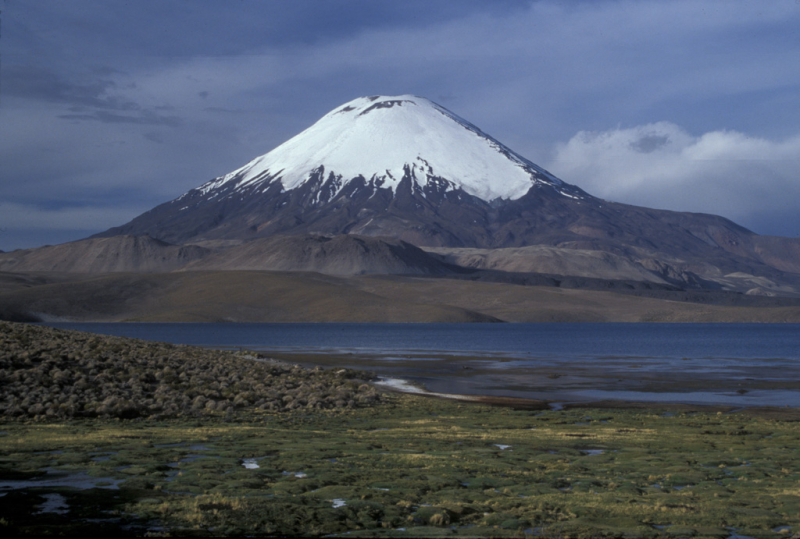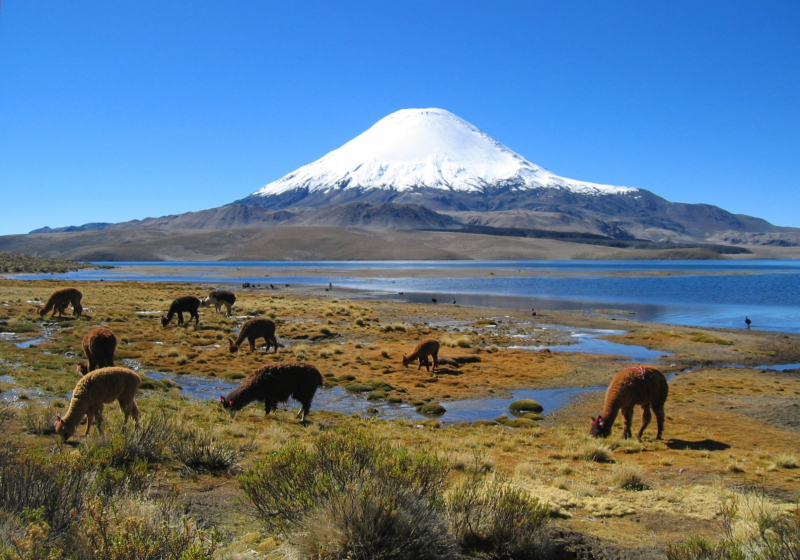Parinacota

With a height of 20,827 feet, Parinacota is Bolivia's sixth tallest mountain. The mountain is a dormant stratovolcano on the Bolivian-Peruvian border, situated in Bolivia's Oruro Department and Chile's Arica and Parinacota Region. It also happens to be on the border of two national parks, Bolivia's Sajama National Park and Chile's Lauca National Park. It is part of the Payachata volcanic group, and the Andes Mountains are its parent range. Lava flows have been formed by these cones. Lava domes and andesitic lava flows form a platform beneath the volcano.
Parinacota is a huge dormant stratovolcano that last erupted between 10 BC and 590 AD, creating the Chungará Lake in the process. Bolivian Carlos Terán and Austrian Joseph Prem made the first climb of Parinacota in 1928.
During the Holocene, Parinacota erupted in a series of effusive and explosive eruptions, the most recent of which occurred about 200 years ago. While no eruptions have been recorded, tales among the indigenous Aymara people suggest that they may have witnessed one. In the future, renewed activity in Parinacota is likely, however the region's low population density would limit the amount of harm that may occur. Some communities in Bolivia and Chile, as well as a regional route, could be impacted by a fresh eruption.
Location: Bolivia/Chile
Range: Cordillera Occidental
Elevation: 6342 m | 20807 ft











